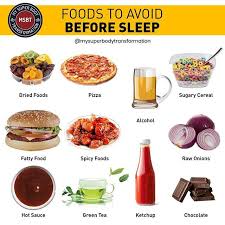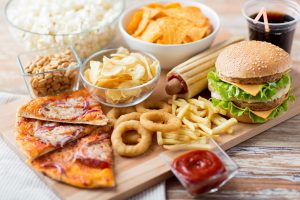
There are many health foods that are delicious and filling. You will enjoy delicious, nutritious meals that are both colorful and tasty by including them in your daily diet. Among these foods are fruits, vegetables, nuts, seeds, and legumes. They are also delicious and require little preparation. Apples are a great choice because they are rich in fiber, vitamin C and antioxidants. They're also easy to find in grocery stores and can easily be added as a flavoring to smoothies.
Apart from their high nutritional value, prunes can help keep your digestion regular. They are high in fiber and antioxidants which make them great for the body. A quarter cup of prunes has 104 calories and 12% fiber. They can be used in smoothies, baked goods, and cereals. They're also delicious added to sauces and hummus. These make them a delicious snack that you can include in your diet. They are very tasty and easily accessible.
A variety of starchy veggies are also available. These include carrots, beets, squash, corn, pumpkin, and sweet potatoes. These are excellent sources of fiber, energy, and vitamins. They also have a lot B and Z. They are healthy for the body and high in iron and vitamin D. If you make them at-home, ensure that you compare their nutritional content with other brands.

Grilled fish is also an option, as well as salads. Salmon, mackerel, herring, sardines, tuna and mackerel are some of the best types to eat. They're rich in omega-3s, which are vital for signaling and cell membrane fluidity. They also reduce the risk of developing heart disease, diabetes, or cancer.
Other than fruits and vegetables, legumes are also high in protein, and dietary fiber. These foods will keep your stomach fuller longer, and you won't snack between meals. These foods can also be substituted for meat. You get the same protein but without any extra fat. You can avoid dairy products and meat by choosing calcium-enriched alternatives. These contain 100 mg of calcium per 100ml.
Choosing the right types of food is important. For your overall health, fruits and vegetable consumption is vital. They're high in vitamins, minerals, and fibre. It's important that you choose the right fruits and veggies to eat every day. Remember to eat them every day as they are healthy for your body. Remember that eating as many of them as possible is the best way to achieve that.
Yogurt is another good option. Yogurt is an excellent breakfast option because it contains a lot of protein. It is also rich in vitamins and minerals. It's also a good source for soluble fiber. This is found in fruits, vegetables and whole grain. It's important to mix the different types of foods to make them more interesting. Some prefer tea while others prefer coffee. Coffee may not be as popular than their counterparts but it has many health benefits including increasing energy and decreasing the risk for type 2 diabetes.

Beans are a good alternative to vegetables and fruits. Beans are low-fat and high in protein. They are also a good source for fiber, magnesium, potassium and other nutrients. They also contain plant-based protein. In addition, they're inexpensive. They can also be used in salads or as side dishes when cooking. However, many people don't get enough beans.
Beans and seeds are important foods that you should eat daily. They are rich sources of phytonutrients. Fiber and B vitamins. They're also inexpensive. They can also help you lose weight and keep it off. A wide range of healthy foods will be available for you to enjoy every day. You can eat small amounts of these foods if you have the means. They're delicious and filling, and they're easy to prepare.
FAQ
Why does our weight change as we get older?
How can you find out if your weight has changed?
If there are less calories than muscle mass, then weight loss is possible. This means that calories must be consumed at a rate greater than energy. A decreased level of activity is the main cause of weight loss. Others include pregnancy, hormonal imbalances or certain medications. If there is more body fat than muscle mass, then weight gain can occur. It occurs when people consume more calories each day than they use. The most common causes are overeating, increased activity, hormonal changes, and excessive calories.
The primary reason we lose weight is that we consume less calories than what we burn. Exercise regularly increases your metabolism rate, which allows you to burn more calories every day. But this doesn't guarantee that we'll lose weight. All that matters is whether we're losing weight or gaining muscles. Weight loss is possible if you burn more calories than you consume. However, if we consume more calories than we burn, we end up storing them as extra fat.
As we age we tend to be slower in moving and thus we don't move nearly as much. We also tend to consume less food than when we were younger. This is why we tend to gain weight. On the other hand, we have more muscle mass and look larger than we actually are.
Without weighing yourself each week, there is no way to know how much weight you have lost. There are many ways you can measure your weight. You can check your waist size, your hips, your thighs, your arms, etc. Some people prefer to use a bathroom scale while others prefer to measure with tape.
You can track your progress by weighing yourself at least once per week and measuring your waistline every month. To see how far you have come, you can take photos of yourself every few month.
You can also check your height online to find out how many pounds you have. If you're tall at 5'10", and weigh 180lbs, your weight would be 180.
What lifestyle is most healthy?
Healthy lifestyles include eating healthy food, regular exercise, good sleep, and avoiding stress. If you follow these guidelines, you will be able to lead a long and healthy life.
You can start by making small changes in your diet and exercise routine. Try walking for 30 minutes each day to lose weight. You can also take up dancing or swimming if you are looking to be more active. An online fitness program such as Strava or Fitbit that tracks your activity could be a good option.
How can you live your best life every day?
Find out what makes YOU happy. This is the first step in living a life that you love. Once you've identified what makes your happy, you can start to work backwards. Asking others about their lives can help you to see how they live the best life possible.
You can also read books like "How to Live Your Best Life" by Dr. Wayne Dyer. He talks about finding happiness and fulfillment in all aspects of our lives.
What is the difference among a virus or a bacterium and what are their differences?
A virus can be described as a microscopic organism that cannot reproduce in another cell. A bacterium is a single-celled organism that reproduces by splitting itself in two. Viruses have a very small size (about 20 nanometers), while bacteria is larger (up to one micron).
Viruses spread easily through contact with infected bodily tissues, such as saliva and urine, semen, vaginal secretions or pus. Bacteria can easily be spread from direct contact to contaminated surfaces and objects.
Viral infections can also be introduced to our bodies by a variety of cuts, scrapes or bites. They may also enter through the nose, mouth, eyes, ears, vagina, rectum , or anus.
Bacteria may enter our bodies through cuts and scrapes on our skin, burns, insect bites, and other wounds. They can also get into our bodies via food, water or soil.
Both viruses and bacteria can cause illness. But viruses do not have the ability to multiply within their hosts. They only cause disease when they infect living tissue.
Bacteria may spread to other people and cause sickness. They can infiltrate other parts of the body. We need antibiotics to get rid of them.
Statistics
- The Dietary Guidelines for Americans recommend keeping added sugar intake below 10% of your daily calorie intake, while the World Health Organization recommends slashing added sugars to 5% or less of your daily calories for optimal health (59Trusted (healthline.com)
- WHO recommends consuming less than 5% of total energy intake for additional health benefits. (who.int)
- In both adults and children, the intake of free sugars should be reduced to less than 10% of total energy intake. (who.int)
- WHO recommends reducing saturated fats to less than 10% of total energy intake; reducing trans-fats to less than 1% of total energy intake; and replacing both saturated fats and trans-fats to unsaturated fats. (who.int)
External Links
How To
27 Steps to achieve a healthy lifestyle when your family only buys junk food
Cooking at home is the most popular way to eat healthier. But, it can be hard to make healthy meals because many people don't know how. This article will show you how to make healthier eating choices at restaurants.
-
Choose restaurants that offer healthy options.
-
Order salads and vegetables before ordering any meat dishes.
-
Ask for sauces with no added sugar.
-
Avoid fried foods.
-
Grilled meats are better than fried.
-
You shouldn't order dessert unless it is absolutely necessary.
-
Make sure that you have something else to eat after dinner.
-
You should eat slowly and chew well.
-
Take plenty of water with your meals.
-
Breakfast and lunch should not be skipped.
-
Take fruit and vegetables along with every meal.
-
Drink milk rather than soda.
-
Try to avoid sugary drinks.
-
Reduce the salt content of your diet.
-
You should limit how often you visit fast food restaurants.
-
Ask someone to come along if you are unable to resist temptation.
-
You should not allow your kids to watch too many TV programs.
-
Do not turn on the television while you eat.
-
Do not consume energy drinks.
-
Take regular breaks from the office.
-
Get up earlier in the morning to exercise.
-
Move every day.
-
Start small and increase your knowledge slowly.
-
Set realistic goals.
-
Be patient.
-
Find time to exercise even if you don't feel like it.
-
Positive thinking is important.